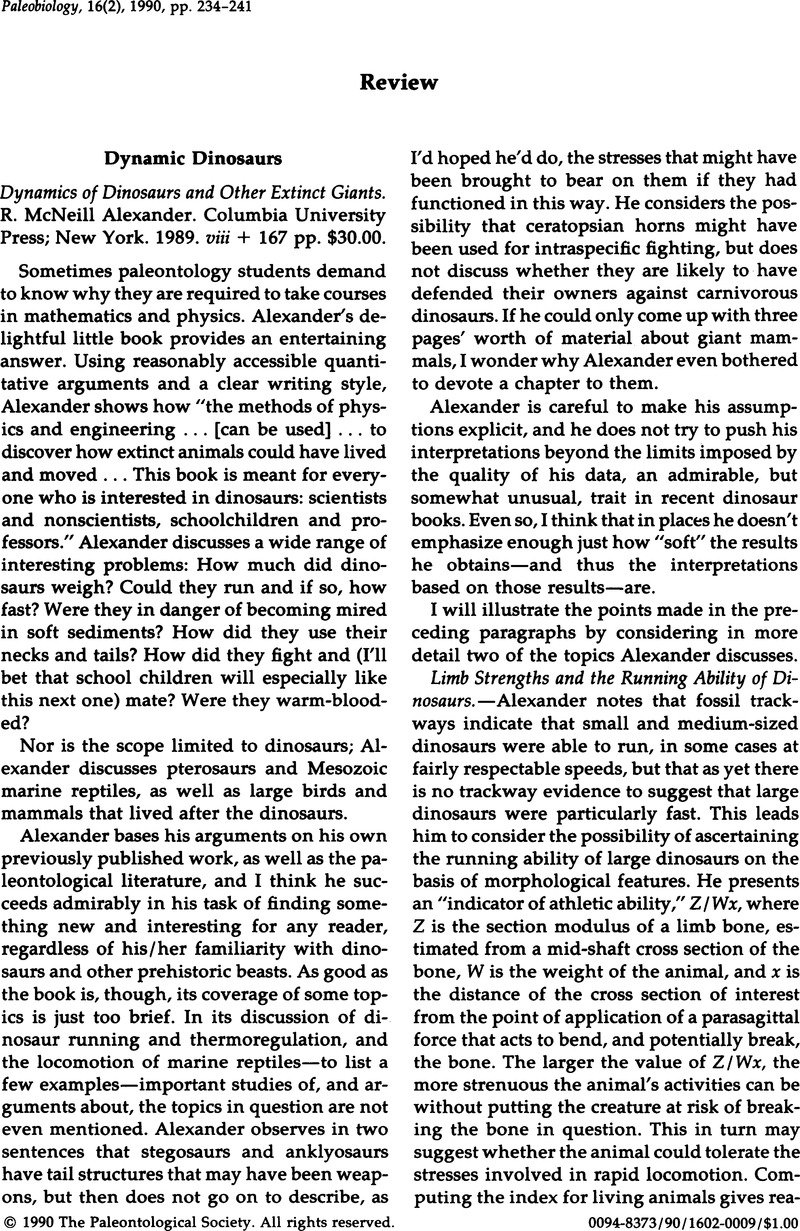Crossref Citations
This article has been cited by the following publications. This list is generated based on data provided by Crossref.
Holtz, Thomas R.
1995.
The arctometatarsalian pes, an unusual structure of the metatarsus of Cretaceous Theropoda (Dinosauria: Saurischia).
Journal of Vertebrate Paleontology,
Vol. 14,
Issue. 4,
p.
480.
Farlow, James O.
Smith, Matt B.
and
Robinson, John M.
1995.
Body mass, bone “strength indicator,” and cursorial potential ofTyrannosaurus rex.
Journal of Vertebrate Paleontology,
Vol. 15,
Issue. 4,
p.
713.
Lockley, Martin G.
and
Hunt, Adrian P.
1995.
Ceratopsid tracks and associated ichnofauna from the Laramie Formation (Upper Cretaceous: Maastrichtian) of Colorado.
Journal of Vertebrate Paleontology,
Vol. 15,
Issue. 3,
p.
592.
Seebacher, Frank
2001.
A new method to calculate allometric length-mass relationships of dinosaurs.
Journal of Vertebrate Paleontology,
Vol. 21,
Issue. 1,
p.
51.
Alexander, R. McNeill
2006.
Dinosaur biomechanics.
Proceedings of the Royal Society B: Biological Sciences,
Vol. 273,
Issue. 1596,
p.
1849.
Therrien, François
and
Henderson, Donald M.
2007.
My theropod is bigger than yours … or not: estimating body size from skull length in theropods.
Journal of Vertebrate Paleontology,
Vol. 27,
Issue. 1,
p.
108.
Isles, Timothy E.
2009.
The socio-sexual behaviour of extant archosaurs: implications for understanding dinosaur behaviour.
Historical Biology,
Vol. 21,
Issue. 3-4,
p.
139.
Mallon, Jordan C.
2017.
Recognizing sexual dimorphism in the fossil record: lessons from nonavian dinosaurs.
Paleobiology,
Vol. 43,
Issue. 3,
p.
495.
Reolid, Matías
Cardenal, Francisco J.
and
Reolid, Jesús
2021.
Digital 3D models of theropods for approaching body-mass distribution and volume.
Journal of Iberian Geology,
Vol. 47,
Issue. 4,
p.
599.
Rothschild, Bruce M.
Surmik, Dawid
and
Bertozzo, Filippo
2023.
Modern Paleopathology, The Study of Diagnostic Approach to Ancient Diseases, their Pathology and Epidemiology.
p.
417.
Naish, Darren
2025.
Thoughts on reviewing books, from an incoming book review editor.
Historical Biology,
p.
1.


